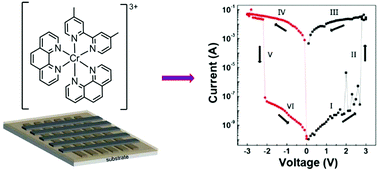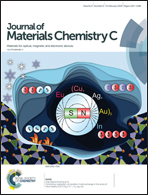Polypyridyl chromium(iii) complexes for non-volatile memory application: impact of the coordination sphere on memory device performance†
Abstract
Molecular non-volatile memory devices are deemed to offer remarkable features such as low-cost, high retention times and low power consumption that could possibly catapult their implementation over the contemporary silicon-based devices. Although scattered examples of small molecules, particularly transition metal complexes with rich electrochemical behavior, have been demonstrated to show promising performance in memory device application, systematic study on the molecular design and the structure–property relationship is lacking. Moreover, studies on memory applications of transition metal complexes have been mainly confined to those of precious metals. These have hindered the development and the practical applications of molecular non-volatile memory devices. To improve the practical applicability of transition metal complex-based molecular memory devices, herein, we report the study of memory applications of various solution-processable and earth-abundant polypyridyl Cr(III) complexes. Some of the fabricated resistive random-access memory (RRAM) devices exhibit reversible bipolar switching, high ON/OFF ratio and long retention time. It is anticipated that this study will provide important insights on the molecular design of transition metal complexes for memory device applications and would lead to a new generation of economically accessible and sustainable non-volatile memory devices.



 Please wait while we load your content...
Please wait while we load your content...